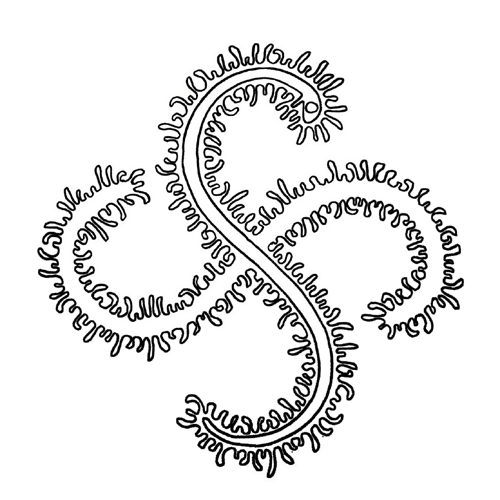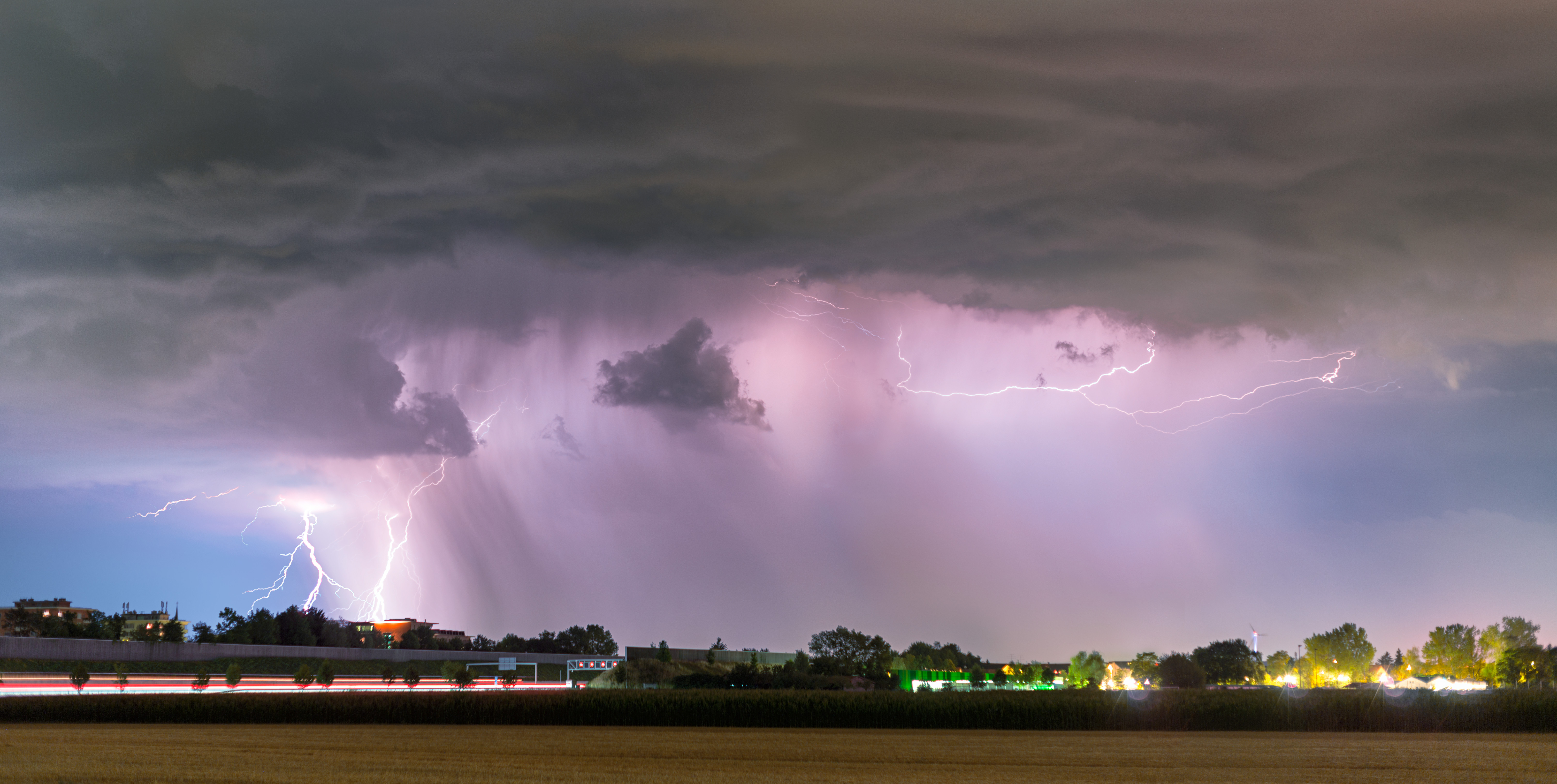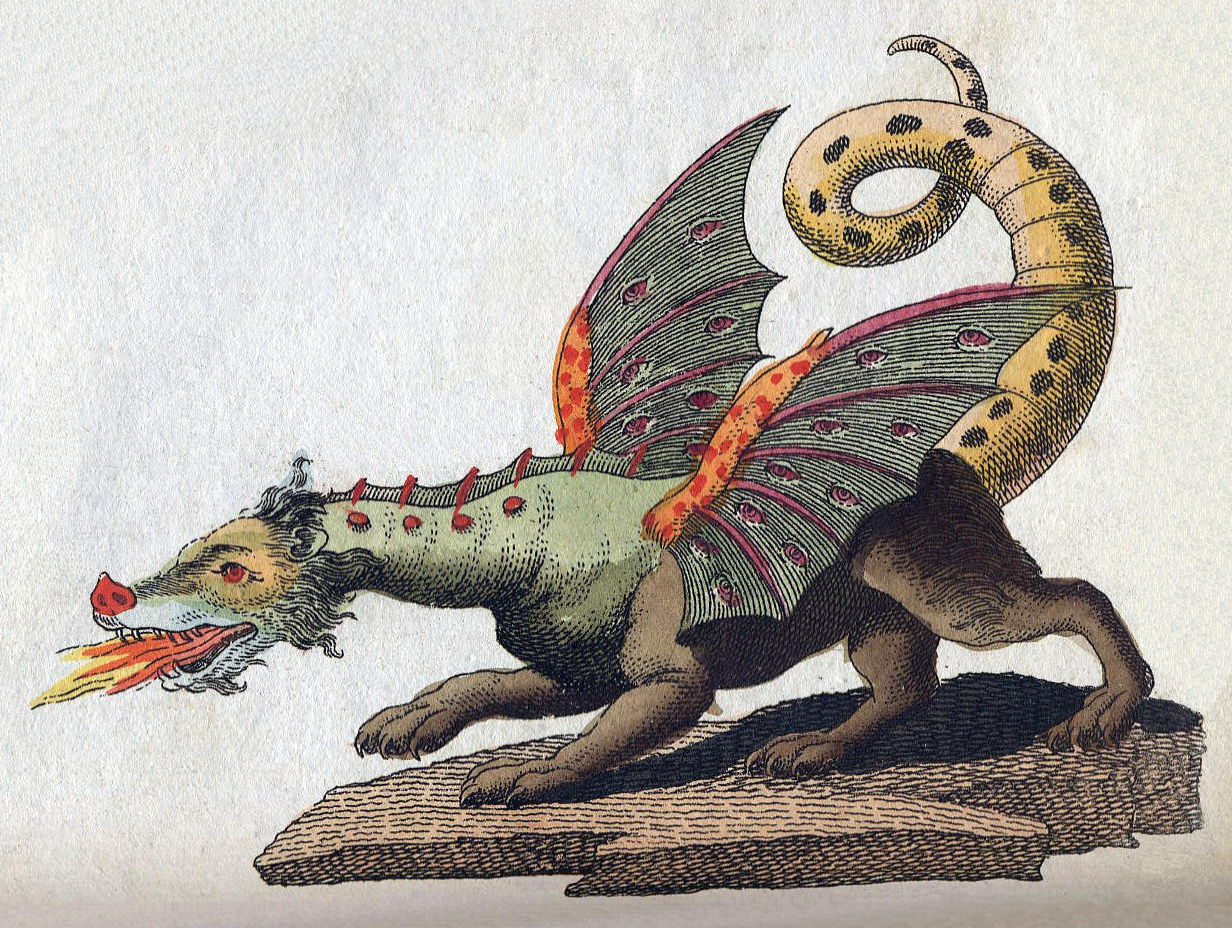|
Sugaar
In Basque mythology, Sugaar (also Sugar, Sugoi, Suarra, Maju) is the male half of a pre-Christian Basque deity associated with storms and thunder. He is normally imagined as a dragon or serpent. Unlike his female consort, Mari, there are very few remaining legends about Sugaar. The basic purpose of his existence is to periodically join with Mari in the mountains to generate the storms. In one myth Sugaar seduces a Scottish princess in the village of Mundaka to father the mythical first Lord of Biscay, Jaun Zuria. This legend is believed to be a fabrication made to legitimize the Lordship of Biscay as a separate state from Navarre, because there is no historical account of such a lord. Only the fact that the delegates of Mundaka were attributed with the formal privilege of being the first to vote in the (Parliament) of the province may look as unlikely indication of the partial veracity of this legend. Etymology The name is derived from (serpent) and (male), thus "male ... [...More Info...] [...Related Items...] OR: [Wikipedia] [Google] [Baidu] |
Mari (goddess)
Mari, also called Mari Urraca, Anbotoko Mari ("the Lady of Anboto"), and Murumendiko Dama ("Lady of Murumendi"), is the main goddess of the ancient Basque mythology, who is said to mainly live on the eastern slope of Mount Anboto (1,330 metres). From there she takes care of the environment and dispenses justice. When clouds appear around Anboto it is said the this is because Mari has returned to her home on this mountain, the so-called "Cave of The Lady". She is married to the god Sugaar (also known as Sugoi or Maju). Legends connect her to the weather: when she and Maju travel together hail will fall, her departures from her cave will be accompanied by storms or droughts, and which cave she lives in at different times will determine dry or wet weather: wet when she is in Anboto; dry when she is elsewhere (the details vary). Other places where she is said to dwell include the chasm of Murumendi, the cave of Gurutzegorri ( Ataun), Aizkorri, and Aralar, although it is not ... [...More Info...] [...Related Items...] OR: [Wikipedia] [Google] [Baidu] |
Basque Mythology
The mythology of the ancient Basques largely did not survive the arrival of Christianity in the Basque Country between the 4th and 12th century AD. Most of what is known about elements of this original belief system is based on the analysis of legends, the study of place names and scant historical references to pagan rituals practised by the Basques. One main figure of this belief system was the female deity Mari. According to legends collected in the area of Ataun, the other main figure was her consort Sugaar. However, due to the scarcity of the material, it is difficult to say if this would have been the "central pair" of the Basque pantheon. Based on the attributes ascribed to these mythological creatures, this would be considered a chthonic religion as all its characters dwell on earth or below it, with the sky seen mostly as an empty corridor through which the divinities pass. Historical sources The main sources for information about non-Christian Basque beliefs ar ... [...More Info...] [...Related Items...] OR: [Wikipedia] [Google] [Baidu] |
Thunder Gods
Polytheistic peoples from many cultures have postulated a thunder deity, the creator or personification of the forces of thunder and lightning; a lightning god does not have a typical depiction and will vary based on the culture. In Indo-European cultures, the thunder god is frequently depicted as male and known as the chief or King of the Gods, e.g.: Indra in Hinduism, Zeus in Greek mythology, Zojz in Albanian mythology, and Perun in ancient Slavic religion. Mediterranean * Adad, Bel, Ishkur, Marduk ( Babylonian-Assyrian mythology) * Baʿal, Hadad ( Canaanite and Phoenician mythology) * I Verbti ( Albanian mythology) * Novensiles (Etruscan mythology) * Perëndi ( Albanian mythology) * Set (Egyptian mythology) * Shurdh (Albanian mythology) * Śuri (Etruscan mythology) * Tarḫunna (Hittite mythology and religion, Hittite mythology) * Tarḫunz (Luwian religion, Luwian mythology) * Teshub (Hurrian religion, Hurrian mythology) * Vahagn (Armenian mythology) * Zibelthiu ... [...More Info...] [...Related Items...] OR: [Wikipedia] [Google] [Baidu] |
Herensuge
Herensuge is the name for a mythical dragon in the Basque language. In Basque mythology, dragons appear sparingly, sometimes with seven heads. Herensuge often also appear in the form of a serpent. The seven heads were believed to be the offspring of the Herensuge dragon. When the little dragons were fully grown, they would fall off their mother's head. Only the god Sugaar is associated with this creature but more often with a serpent. A legend describes a Navarrese knight, Teodosio de Goñi, who while making penance for double parricide in the Aralar Range rescues a woman that had been given as ransom to the dragon. When the chains that tie his ankles are bitten by the dragon and he sees no way of defeating it, the knight prays to Saint Michael to save him. In Heaven, the archangel is notified, but refuses to enter the fight without God. The archangel arrives with God over his head and decapitates the dragon, liberating Teodosio from his chains and ending his penance. This leg ... [...More Info...] [...Related Items...] OR: [Wikipedia] [Google] [Baidu] |
Jaun Zuria
Jaun Zuria (Basque for "the White Lord") is the mythical first Lord and founder of the Lordship of Biscay, who defeated the Leonese and Asturian troops in the also-mythical Battle of Padura, in which he chased off the invaders to the Malato Tree, establishing there the borders of Biscay. There are three accounts of its legend, one by the Portuguese count Pedro Barcelos and two by the chronicler Lope García de Salazar.Jaun Zuria entry at the Auñamendi Entziklopedia (Spanish) According to the legend, Jaun Zuria had been born from a Scottish or English princess who had been visited by the Basque deity Sugaar in the village of [...More Info...] [...Related Items...] OR: [Wikipedia] [Google] [Baidu] |
Lord Of Biscay
The Lordship of Biscay (, Basque: ''Bizkaiko jaurerria'') was a region under feudal rule in the region of Biscay in the Iberian Peninsula between 1040 and 1876, ruled by a political figure known as the Lord of Biscay. One of the Basque ''señoríos'', it was a territory with its own political organization, with its own naval ensign, consulate in Bruges and customs offices in Balmaseda and Urduña, from the 11th century until 1876, when the Juntas Generales were abolished. Since 1379, when John I of Castile became the Lord of Biscay, the lordship was integrated into the Crown of Castile, and eventually the Kingdom of Spain. Mythical foundation The first explicit reference to the foundation of the Biscayan lordship is in the ''Livro de Linhagens'', written between 1323 and 1344 by Pedro Afonso, Count of Barcelos. It is an entirely legendary account. The book narrates the arrival in Biscay of a man named Froom, a brother of the King of England, who had expelled him from his ki ... [...More Info...] [...Related Items...] OR: [Wikipedia] [Google] [Baidu] |
European Dragons
The European dragon is a legendary creature in folklore and mythology among the overlapping cultures of Europe. The Roman poet Virgil in his poem ''Culex'' lines 163–201, describing a shepherd battling a big constricting snake, calls it "serpens" and also " draco", showing that in his time the two words probably could mean the same thing. In and after the early Middle Ages, the European dragon is typically depicted as a large, fire-breathing, scaly, horned, lizard-like creature; the creature also has leathery, bat-like wings, four legs, and a long, muscular prehensile tail. Some depictions show dragons with one or more of: feathered wings, crests, ear frills, fiery manes, ivory spikes running down its spine, and various exotic decorations. In folktales, dragon's blood often contains unique powers, keeping them alive for longer or giving them poisonous or acidic properties. The typical dragon in Christian culture protects a cavern or castle filled with gold and treasure. An ... [...More Info...] [...Related Items...] OR: [Wikipedia] [Google] [Baidu] |
Basque People
The Basques ( or ; ; ; ) are a Southwestern European ethnic group, characterised by the Basque language, a common culture and shared genetic ancestry to the ancient Vascones and Aquitanians. Basques are indigenous to, and primarily inhabit, an area traditionally known as the Basque Country ()—a region that is located around the western end of the Pyrenees on the coast of the Bay of Biscay and straddles parts of north-central Spain and south-western France. Etymology The English word ''Basque'' may be pronounced or and derives from the French ''Basque'' (), itself derived from Gascon ''Basco'' (pronounced ), cognate with Spanish ''Vasco ''(pronounced ). Those, in turn, come from Latin ''Vascō'' (pronounced ; plural '' Vascōnēs''—see history section below). The Latin generally evolved into the bilabials and in Gascon and Spanish, probably under the influence of Basque and the related Aquitanian (the Latin /w/ instead evolved into in French, Ita ... [...More Info...] [...Related Items...] OR: [Wikipedia] [Google] [Baidu] |
Scotland
Scotland is a Countries of the United Kingdom, country that is part of the United Kingdom. It contains nearly one-third of the United Kingdom's land area, consisting of the northern part of the island of Great Britain and more than 790 adjacent Islands of Scotland, islands, principally in the archipelagos of the Hebrides and the Northern Isles. To the south-east, Scotland has its Anglo-Scottish border, only land border, which is long and shared with England; the country is surrounded by the Atlantic Ocean to the north and west, the North Sea to the north-east and east, and the Irish Sea to the south. The population in 2022 was 5,439,842. Edinburgh is the capital and Glasgow is the most populous of the cities of Scotland. The Kingdom of Scotland emerged as an independent sovereign state in the 9th century. In 1603, James VI succeeded to the thrones of Kingdom of England, England and Kingdom of Ireland, Ireland, forming a personal union of the Union of the Crowns, three kingdo ... [...More Info...] [...Related Items...] OR: [Wikipedia] [Google] [Baidu] |
Sabbath (witchcraft)
A Witches' Sabbath is a purported gathering of those believed to practice witchcraft and other rituals. The phrase became especially popular in the 20th century. Origin of the phrase The most infamous and influential work of witch-hunting lore, ''Malleus Maleficarum'' (1486) does not contain the word sabbath (). The first recorded English use of ''sabbath'' referring to sorcery was in 1660, in Francis Brooke's translation of Vincent Le Blanc's book ''The World Surveyed'': "Divers Sorcerers ��have confessed that in their Sabbaths ��they feed on such fare." The phrase "Witches' Sabbath" appeared in a 1613 translation by "W.B." of Sébastien Michaëlis's ''Admirable History of Possession and Conversion of a Penitent Woman'': "He also said to Magdalene, Art not thou an accursed woman, that the Witches Sabbath ( French: ''le Sabath''] is kept here?" The phrase is used by Henry Charles Lea in his ''History of the Inquisition of the Middle Ages'' (1888). Writing in 1900, Germ ... [...More Info...] [...Related Items...] OR: [Wikipedia] [Google] [Baidu] |
Christianity
Christianity is an Abrahamic monotheistic religion, which states that Jesus in Christianity, Jesus is the Son of God (Christianity), Son of God and Resurrection of Jesus, rose from the dead after his Crucifixion of Jesus, crucifixion, whose coming as the Messiah#Christianity, messiah (Christ (title), Christ) was Old Testament messianic prophecies quoted in the New Testament, prophesied in the Old Testament and chronicled in the New Testament. It is the Major religious groups, world's largest and most widespread religion with over 2.3 billion followers, comprising around 28.8% of the world population. Its adherents, known as Christians, are estimated to make up a majority of the population in Christianity by country, 157 countries and territories. Christianity remains Christian culture, culturally diverse in its Western Christianity, Western and Eastern Christianity, Eastern branches, and doctrinally diverse concerning Justification (theology), justification and the natur ... [...More Info...] [...Related Items...] OR: [Wikipedia] [Google] [Baidu] |





